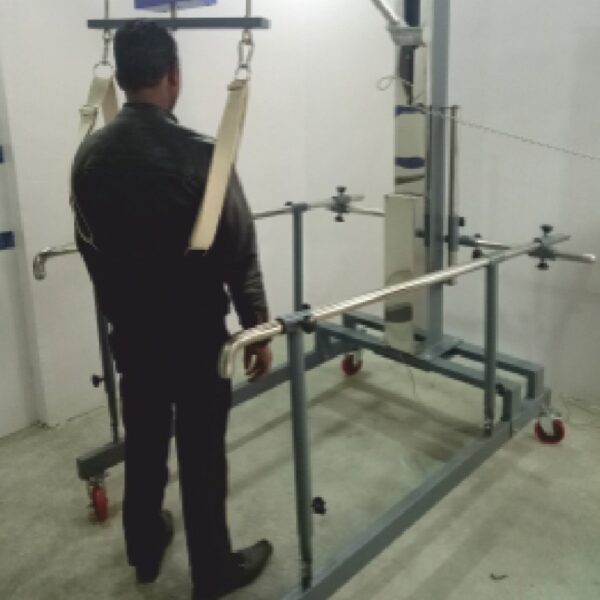Related products
BMI 1023 EMG BIOFEEDBACK With Stimulator
BMI 1023 EMG BIOFEEDBACK With Stimulator - used to give a person information about thier body. Physical therapists can use a biofeedback machine that specifically measures muscle activity. This is called electrical myography or EMG biofeedback. It is useful in retraining muscles following surgery, disuse or a period of muscular dysfunction.
BMI 1119 Electronic Balance Board
BMI – 1253 APT HI – LO DELUXE
Robotic Exoskeleton Gait Therapy
Who will benefit from “exorehabillitation”? • Patients recovering from stoke with mobility issues; • Patients after a traumatic brain injury with mobility issues; • Patients with traumatic injury of the spine; • Patients with gait pathologies due to musculoskeletal system disorders; • Patients with cerebral palsy and multiple sclerosis with mobility issues. Technical specifications of the E-Helper exoskeleton: • 8 hours of autonomous operation; • Patient weight up to 110 kg, height – 150-190 cm; • Ability to climb stairs, turn around; • Reducing motors with added durability; • Does not require costly annual servicing; Use of a E-Helper in conjunction with reaterra treadmill U Reduces workload for the medical staff. • Increases the safety of rehabilitation process. Two options for use: 1.Patient wearing an exoskeleton is freely positioned on the treadmill with off-loading of the body weight. 2.Exoskeleton can be affixed on the treadmill, which makes this system similar in its capabilities to Lokomat system (with options for separate regulation of the motor power). • Treadmill operate in two direction backward and forward • Treadmill speed start from 0.1km/h to 20km/h • Treadmill is operated with LCD touch display • Wheel chair ramp Joint use with FESJoint use of E- Helper Use the 8-chanel electrostimulation and electromyography system in combination with the exoskeleton for an increased efferent stimulation and improvement of neural plasticity (the system contains sensors that detect position; therefore, the system performs electrostimulation during the necessary walking phase).
BMI 1001 UNWEIGHING SYSTEM (MOBILITY TRAINER) – Uses
Tilt Trainer
Combination of TILT TABLE WITH ACTIVE PASSIVE TRAINER with heel exerciser , combines both PASSIVE and ACTIVE training by using physical effort in conjunction with the electrical operation of the motor. Offering a wide range of advanced features for both active and passive users, our FULLY DIGITAL, electric powered trainer is designed mainly for users with limited or no muscular strength. Whether disabled by injury, suffering from muscle atrophy or confined to a wheelchair, the active passive trainer caters to the different degrees of muscle incapability. Fully Digital, the active passive trainer enables complete control of speed, resistance, number of rotations and load levels. A remote control facilitates operation for users with limited movement abilities. Available accessories include heart rate monitor,special handle bars, hemi-gloves, footrests, and hand grips. Highly portable, weighing only 10kg/22 lbs the Active Passive Trainer can be placed on the floor, on a table top or used with the Hi-Lo frame for comfortable, complete and total workout. Provided with three straps to hold the patient -Heavy duty motor provides silent and smooth lifting action with push button control -Range of tilt calibrated from 0-85 degree -Table top is 61 cms wide x 198 cms long x 80 cms high -Fitted on heavy duty tubular steel frame with locking castors for easy mobility -Oven baked finish Heel Exerciser (adjustable) - Specially designed unit for exercising the heel and tarsus Muscle groups. - The unit is fitted in the Tilt Table so that the patient can exercise while in standing posture even at 90 degree. - Resistance can be increased or decreased by shifting the foot holder up or down on the lever .














Reviews
There are no reviews yet.